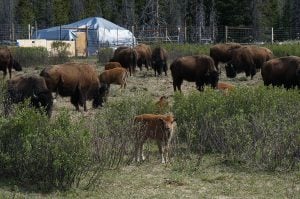In the weeks that followed, three more petroglyphs and, remarkably, the tool that carved them were discovered at the site. The rock art was carved in a style known as hoofprint tradition, which was common in southern Alberta, southern Saskatchewan, North Dakota, South Dakota, Montana and Wyoming 300 to 1,800 years ago. Walker explains hoofprint art is metaphorical: “Instead of carving an entire bison, they carved motifs such as hooves or ribs.”
Wanuskewin comes from the Nēhiyawēwin (Plains Cree), roughly translating as “sanctuary,” and was an important gathering place for the people of the Northern Plains. It’s on the outskirts of Saskatoon along the bison migration path. “There’s no cultural group that we recognize archeologically that is not represented. Everybody was here at some point,” Walker says.
After the bison were wiped out, and the Indigenous Peoples in the region were forced to move to reserves, the land that is now Wanuskewin became a small farm. In the early 1980s, when the property was on the brink of being developed for condos, Walker and a group of local Indigenous Elders (who went on to become the park’s Elders’ council) — including the late Chief Hilliard McNab — decided the land would be much more valuable as a heritage park.








